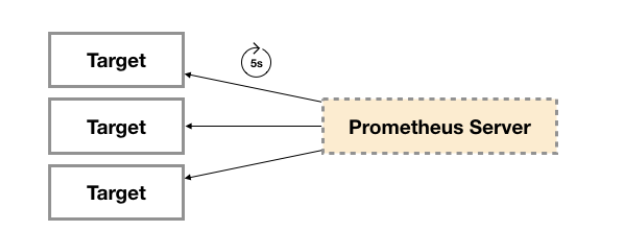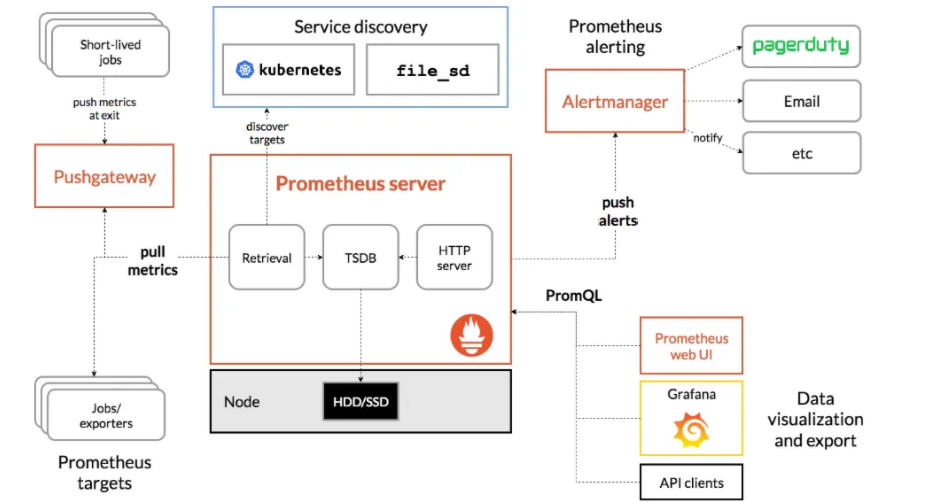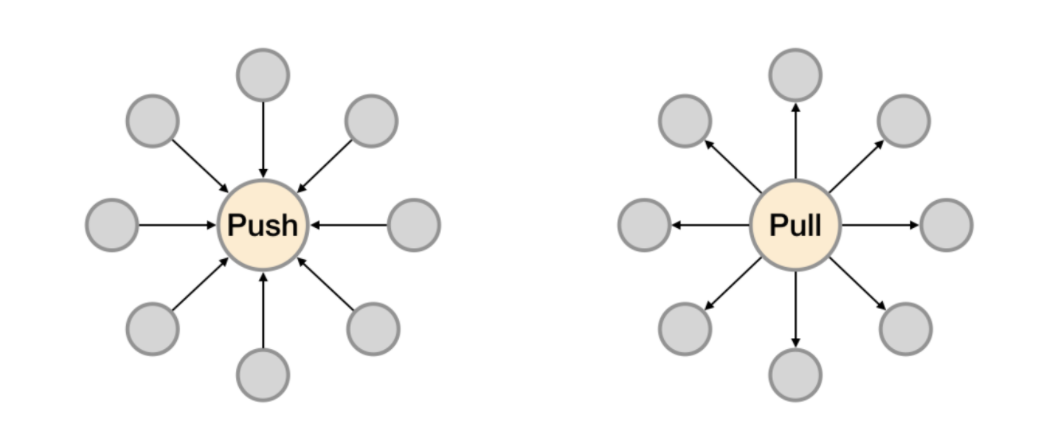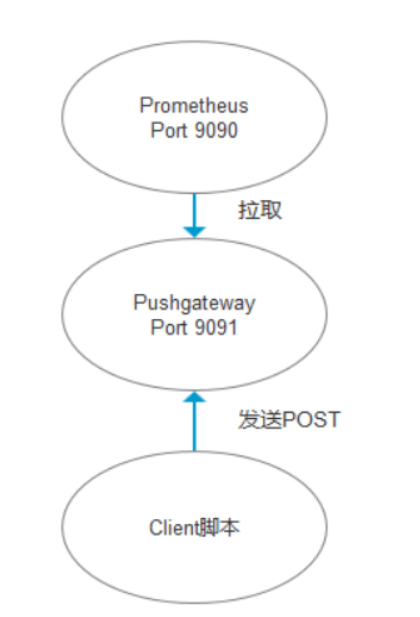Prometheus安装教程
欢迎关注
H寻梦人公众号

参考目录
- docker安装Prometheus
- 基于docker 搭建Prometheus+Grafana
- prometheus官方文档
- docker安装prometheus(普罗米修斯)
- Prometheus操作指南
相关链接
1、创建配置挂载目录
mkdir /data/prometheus
mkdir /data/prometheus/config
mkdir /data/prometheus/data
chmod 777 -R /data/prometheus
2、创建编辑配置文件
cd /data/prometheus/config
touch prometheus.yml
vim prometheus.yml
目录结构

# my global config
global:
scrape_interval: 15s # Set the scrape interval to every 15 seconds. Default is every 1 minute.
evaluation_interval: 15s # Evaluate rules every 15 seconds. The default is every 1 minute.
# scrape_timeout is set to the global default (10s).
# Alertmanager configuration
alerting:
alertmanagers:
- static_configs:
- targets:
# - alertmanager:9093
# Load rules once and periodically evaluate them according to the global 'evaluation_interval'.
rule_files:
# - "first_rules.yml"
# - "second_rules.yml"
# A scrape configuration containing exactly one endpoint to scrape:
# Here it's Prometheus itself.
scrape_configs:
# The job name is added as a label `job=<job_name>` to any timeseries scraped from this config.
- job_name: 'prometheus'
# metrics_path defaults to '/metrics'
# scheme defaults to 'http'.
static_configs:
- targets: ['192.168.1.190:9091']
# 192.168.1.190 上的prometheus配置:
# my global config
global:
scrape_interval: 15s # Set the scrape interval to every 15 seconds. Default is every 1 minute.
evaluation_interval: 30s # Evaluate rules every 15 seconds. The default is every 1 minute.
# scrape_timeout is set to the global default (10s).
# Alertmanager configuration
alerting:
alertmanagers:
- static_configs:
- targets:
# - alertmanager:9093
# Load rules once and periodically evaluate them according to the global 'evaluation_interval'.
rule_files:
# - "first_rules.yml"
# - "second_rules.yml"
# A scrape configuration containing exactly one endpoint to scrape:
# Here it's Prometheus itself.
scrape_configs:
# The job name is added as a label `job=<job_name>` to any timeseries scraped from this config.
- job_name: 'prometheus'
# metrics_path defaults to '/metrics'
# scheme defaults to 'http'.
static_configs:
- targets: ['192.168.1.190:9091']
- job_name: 'node-exproter'
static_configs:
- targets: ['192.168.1.190:9100']
labels:
instance: 'localhost'
- job_name: 'snmp-exproter'
# metrics_path: '/metrics'
static_configs:
- targets: ['192.168.1.110:8999']
labels:
instance: 'snmp'
- job_name: 'snmp-f5'
# metrics_path: '/metrics'
static_configs:
- targets: ['192.168.1.110:8991']
labels:
instance: 'snmp-f5'
- job_name: 'snmp-f5-mutli'
# metrics_path: '/metrics'
scrape_interval: 30s # 会覆盖全局配置
scrape_timeout: 20s
static_configs:
- targets: ['192.168.1.106:8999']
labels:
instance: 'snmp-f5-multi'
- job_name: 'pushgateway'
metrics_path: '/metrics'
scrape_interval: 30s # 会覆盖全局配置
honor_labels: true #加上此配置exporter节点上传数据中的一些标签将不会被pushgateway节点的相同标签覆盖
static_configs:
- targets: ['192.168.1.190:9092']
labels:
instance: 'pushgateway'
3、启动容器
docker run -p 9091:9090 -e TZ=Asia/Shanghai -v /data/prometheus/config/prometheus.yml:/etc/prometheus/prometheus.yml -v /data/prometheus/data:/data -d --name my_prometheus prom/prometheus
docker run -d
-e TZ=Asia/Shanghai
-p 9091:9090
-v /data/prometheus/prometheus.yml:/etc/prometheus/prometheus.yml
prom/prometheus
访问url:
http://192.168.91.132:9090/graph
效果如下:

访问targets,url如下:
http://192.168.1.190:9091/targets
效果如下:

如果状态没有UP起来,等待一会,就会UP了
hint: 注意要开启指定的端口,以及定义任务的时候要配置指定target的ip
4、使用Node-Exproter作为监控对象
docker pull prom/node-exporter
docker run -d -p 9100:9100
-e TZ=Asia/Shanghai
-v "/prometheus/node-exproter/proc:/host/proc:ro"
-v "/prometheus/node-exproter/sys:/host/sys:ro"
-v "/prometheus/node-exproter/rootfs:/rootfs:ro"
--net="host"
--name "my_node-exproter"
prom/node-exporter
5、使用grafana数据展示
# 拉去镜像
docker pull grafana/grafana
# 新建空文件夹grafana,用来存储数据
mkdir -p /data/grafana
# 设置权限
chmod 777 -R /data/grafana
# 因为grafana用户会在这个目录写入文件,直接设置777,比较简单粗暴!
# 启动grafana
docker run -d
-e TZ=Asia/Shanghai
-p 3000:3000
--name=my_grafana
-v /data/grafana:/var/lib/grafana
grafana/grafana
6、Prometheus进阶
6.1 Expoter
广义上讲所有可以向Prometheus提供监控样本数据的程序都可以被称为一个Exporter。而Exporter的一个实例称为target,如下所示,Prometheus通过轮询的方式定期从这些target中获取样本数据:

从Exporter的来源上来讲,主要分为两类:
- 社区提供的
Prometheus社区提供了丰富的Exporter实现,涵盖了从基础设施,中间件以及网络等各个方面的监控功能。这些Exporter可以实现大部分通用的监控需求。下表列举一些社区中常用的Exporter:
| 范围 | 常用Exporter |
|---|---|
| 数据库 | MySQL Exporter, Redis Exporter, MongoDB Exporter, MSSQL Exporter等 |
| 硬件 | Apcupsd Exporter,IoT Edison Exporter, IPMI Exporter, Node Exporter等 |
| 消息队列 | Beanstalkd Exporter, Kafka Exporter, NSQ Exporter, RabbitMQ Exporter等 |
| 存储 | Ceph Exporter, Gluster Exporter, HDFS Exporter, ScaleIO Exporter等 |
| HTTP服务 | Apache Exporter, HAProxy Exporter, Nginx Exporter等 |
| API服务 | AWS ECS Exporter, Docker Cloud Exporter, Docker Hub Exporter, GitHub Exporter等 |
| 日志 | Fluentd Exporter, Grok Exporter等 |
| 监控系统 | Collectd Exporter, Graphite Exporter, InfluxDB Exporter, Nagios Exporter, SNMP Exporter等 |
| 其它 | Blockbox Exporter, JIRA Exporter, Jenkins Exporter, Confluence Exporter等 |
- 用户自定义的
除了直接使用社区提供的Exporter程序以外,用户还可以基于Prometheus提供的Client Library创建自己的Exporter程序,目前Promthues社区官方提供了对以下编程语言的支持:Go、Java/Scala、Python、Ruby。同时还有第三方实现的如:Bash、C++、Common Lisp、Erlang,、Haskeel、Lua、Node.js、PHP、Rust等。
Exporter规范
所有的Exporter程序都需要按照Prometheus的规范,返回监控的样本数据。以Node Exporter为例,当访问/metrics地址时会返回以下内容:
# HELP node_cpu Seconds the cpus spent in each mode.
# TYPE node_cpu counter
node_cpu{cpu="cpu0",mode="idle"} 362812.7890625
# HELP node_load1 1m load average.
# TYPE node_load1 gauge
node_load1 3.0703125
这是一种基于文本的格式规范,在Prometheus 2.0之前的版本还支持Protocol buffer规范。相比于Protocol buffer文本具有更好的可读性,以及跨平台性。Prometheus 2.0的版本也已经不再支持Protocol buffer,这里就不对Protocol buffer规范做详细的阐述。
6.2 Prometheus采集数据的推拉模式
Prometheus架构图:

PULL:prometheus 用 pull 这种主动拉取的方式 (HTTP GET) 去访问每个节点上 exporter 并采样回需要的数据
PUSH:指的是 在客户端 ( 或者服务器 ) 安装 Pushgateway 插件,然后使用我们运维自行开发的各种脚本,把监控数据组织成 key/value 的形式,或者 metrics 形式发送给 Pushgateway,之后由 Pushgateway 再推送给 prometheus【这里其实使用的也是PULL的模式,不过现在prometheus不用再直接去拉各个Expoter,因为这些Expoter已经把数据都推到了Pushgateway上,prometheus只要去拉取Pushgateway上面的数据即可获取到所有Target的数据,从而间接的形成一种
PUSH模式】
Prometheus推荐使用Pull模式,但是也支持Push模式。Pull还是Push,主要的区别在于数据搜集的主体执行者:
- Pull模式:由Prometheus Server根据配置,定期从提供监控数据地址去 “Pull” 相应的监控对象数据,比如从Node Exporter那里获取节点的监控信息。
- Push模式:从数据的流向的发起来看是从监控对象侧进行主动的数据提供,但是是通过pushgateway作为中间代理的角色,这种模式下增加了pushgateway的角色,首先由监控对象侧将数据发给pushgateway,然后Prometheus Server定期从pushgateway处获取相应的数据。

Pushgateway 是 Prometheus 生态中一个重要工具,使用它的原因主要是:
- Prometheus 采用 pull 模式,可能由于不在一个子网或者防火墙原因,导致 Prometheus 无法直接拉取各个 target 数据。
- 在监控业务数据的时候,需要将不同数据汇总, 由 Prometheus 统一收集。
由于以上原因,不得不使用 pushgateway,但在使用之前,有必要了解一下它的一些弊端:
- 将多个节点数据汇总到 pushgateway, 如果 pushgateway 挂了,受影响比多个 target 大。
- Prometheus 拉取状态
up只针对 pushgateway, 无法做到对每个节点有效。 - Pushgateway 可以持久化推送给它的所有监控数据。
因此,即使你的监控已经下线,prometheus 还会拉取到旧的监控数据,需要手动清理 pushgateway 不要的数据。
PUSH模式

6.3 Prometheus的服务发现方式
通常Prometheus 要增加一个target,需要在配置文件中已添加一个job,例如下:
- job_name: 'prometheus'
static_configs:
- targets: ['localhost:9090']
每次修改需要直接修改服务器上的配置文件,非常麻烦。
Prometheus也提供了服务发现功能,可以从consul,dns,kubernetes,file等等多种来源发现新的目标。
相关连接
6.4 AlertManager监控告警
当监控数据达到一个阈值,prometheus 会把报警信息推送到 Altermanager 软件上,Altermanager 再次推送到报警平台。
但是 Altermanager 的报警功能有很多不足,可以采用 Grafana 4.0 以后提供的报警功能来替代 Altermanager。
实现方案:
prometheus+grafana+alertmanger
Zabbix的使用